|
CITY OF ROCHESTER |
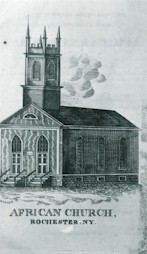 |
African Methodist Episcopal Zion Church
Location: Favor Street, Rochester
Said to have contained a trap door by the pulpit and escape tunnels
leading to Plymouth Avenue and the Genesee River |
 |
Asa Anthony House
Location: 446 Post Avenue, Rochester
Asa Anthony, a cousin of Susan B. Anthony, was a founding member
of the Rochester Anti-Slavery Society.
Photo appeared in the Times Union in 1936; Copyrighted by the
Democrat & Chronicle and reprinted here courtesy of the D & C
http://www.rochesterdandc.com/apps/pbcs.dll/frontpage |
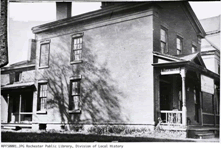 |
Frederick Douglass House
Location: 4 Alexander Street, Rochester
This was one of several places Douglass lived in Rochester. All
were stops on the Underground Railroad. This house was demolished in
the 1900s. The later Douglass home on South Avenue was destroyed by
fire in 1872.
Photo appeared in the Times Union in 1936; Copyrighted by the
Democrat & Chronicle and reprinted here courtesy of the D & C
http://www.rochesterdandc.com/apps/pbcs.dll/frontpage |
 |
Frederick Douglass' North Star newspaper office
Location: Talman Building, Main Street, Rochester
In 1859, Harriet Brent Jacobs opened an abolitionist reading room
here. |
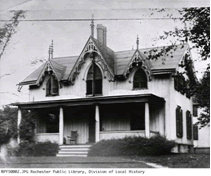 |
George Harvey Humphrey House
Location:669 Genesee Street, Rochester
This house (now demolished) is said to have had a tunnel and
various secret places.
Photo appeared in the Times Union in 1936; Copyrighted by the
Democrat & Chronicle and reprinted here courtesy of the D & C
http://www.rochesterdandc.com/apps/pbcs.dll/frontpage |
 |
Edmund Miller Harness Shop
Location: 61 Spring Street, Rochester
This building was identified as a station in the Rochester
Times-Union, March 10, 1950. |
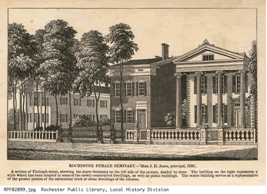 |
Samuel D. Porter House (center building)
Location: Fitzhugh Street, Rochester
This is one of several residences used by Porter in Rochester. He
was corresponding secretary of the Rochester Anti-Slavery Society. |

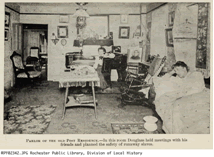 |
Isaac and Amy Post House -- Exterior view, Interior view of parlor
Location: Plymouth Ave., Rochester
The Posts were both founding members of the Rochester Anti-Slavery
Society. In the 1840s they came under the influence of Spiritualism
and the Fox sisters. |
 |
Saxon Apartments (view of hiding place)
Location: 59 South Sophia Street, Rochester
This building was used as a boarding house in the 1840s, and was
later owned by Dr. Harvey Montgomery. Several people may have
housed runaways here.
Photo appeared in the Times Union in 1936; Copyrighted by the
Democrat & Chronicle and reprinted here courtesy of the D & C
http://www.rochesterdandc.com/apps/pbcs.dll/frontpage |
|
OTHER MONROE COUNTY
LOCATIONS |
|
BRIGHTON |
|
 |
Thomas Warrant Homestead
Location: 1956 West Henrietta Road, Brighton
Thomas Warrant was a founder of the Rochester Anti-Slavery
Society. Slaves may have traveled from this house to Frederick
Douglass' home.
Photo appeared in the Times Union in 1936; Copyrighted by the
Democrat & Chronicle and reprinted here courtesy of the D & C
http://www.rochesterdandc.com/apps/pbcs.dll/frontpage |
|
GREECE |
|
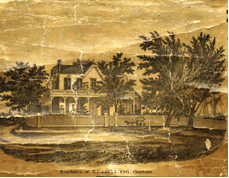 |
G.C. Latta House
Location: Lake Avenue and Latta Road, Charlotte (Greece)
The Latta family is said to have hidden escaped slaves in their
cellar before the fugitives could board ships on the Genesee River
or Lake Ontario. |
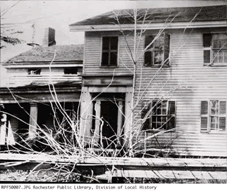 |
Quinby House
Location: Clover Street, Mendon
Rev. Henry Quinby was a Hicksite Quaker who was also a founder of
the Rochester Anti-Slavery Society.
Photo appeared in the Times Union in 1936; Copyrighted by the
Democrat & Chronicle and reprinted here courtesy of the D & C
http://www.rochesterdandc.com/apps/pbcs.dll/frontpage |
|
HILTON |
|
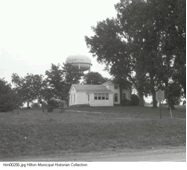 |
Gideon Archer Homestead
Location: 286 South Avenue, Hilton
Gideon and Mary Archer are said to have taken slaves to Walter Vond
of Parma, who then rowed them to freedom in Canada. |
|
PERINTON |
|
 |
Gideon and Jeremiah Ramsdell House
Location 173 Mason Road, Perinton
Gideon Ramsdell was a Quaker. This house is said to be a station. |
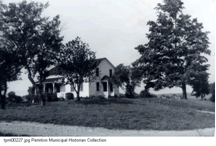 |
Isaac Talman House
Location: 2187 Whitney Road, Perinton
Isaac Talman (or Tallman) House. A location operated by Isaac
Tallman and his family. |
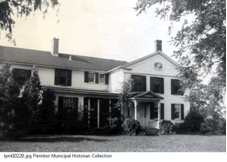 |
Talman/Butler House
Location: 2381 Whitney Road, Perinton
This house was built by Darius Tallman, a son of Isaac Tallman (see
above). It is considered a possible stop on the Railroad. |
|
PITTSFORD |
|
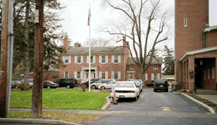 |
Hargous-Briggs House (Ashley Sampson)
Location: 52 S. Main Street, Pittsford
This home was occupied from the 1820s by Judge Ashley Sampson,
reportedly an ardent abolitionist.
Photo courtesy of the Ontario County Historian |
|
SOME OTHER LOCATIONS IN
THE FINGER LAKES REGION OF WESTERN NEW YORK |
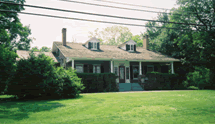 |
"Cobblestone
Farm"
3402 West Lake Road, Town of Canandaigua
Photo courtesy of the Ontario County Historian |
 |
Cobblestone-Ferry Farm
Lower Lake Road, Bridgeport
(Seneca County)
Photo courtesy of the Ontario County Historian |
 |
Alfred B. Field House
104 Gibson Street, Canandaigua
Photo courtesy of the Ontario County Historian |
 |
Fisher Homestead
Main Street, Fishers, Town of Victor, Ontario County
Photo courtesy of the Ontario County Historian |
 |
James Harland House
Route 21, Town of Manchester
Photo courtesy of the Ontario County Historian |
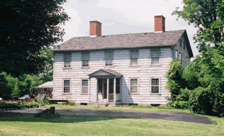 |
Pitts Mansion
Route 20-A (Main St.), Honeoye, Town of Richmond, Ontario County
Photo courtesy of the Ontario County Historian |
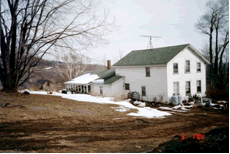 |
Isaac Trembley Farm
County Road 12, South Bristol
Photo courtesy of the Ontario County Historian |
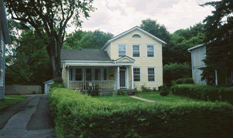 |
Van Houten House
20 Pulteney Street, Geneva
Photo courtesy of the Ontario County Historian |